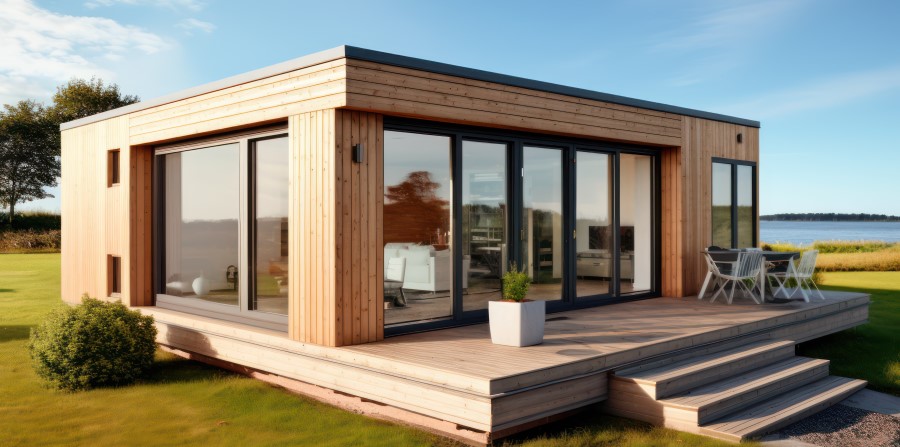Thermal Expansion in Big Doors
Align door design trends with practical considerations for optimal performance

The International Builders’ Show in Las Vegas provided a fascinating glimpse into the new and exciting trends in the market. One of these trends is that aluminum doors are getting much larger, with some fabricators showcasing doors as tall as 23 feet.
Black exterior finishes are also still in vogue with these large aluminum doors, creating a striking look and a wonderful focal point for modern homes. However, these large doors with dark finishes can experience a natural phenomenon that could impact the operation and usage of these doors – thermal expansion, causing a condition known as “thermal bow.” When metals heat up, they expand and the higher the temperature of the metal, the more it will expand.
Impacts
The impacts of thermal expansion are most noticeable in larger metal-framed doors and the inherent challenge of thermal expansion poses significant considerations for the functionality of these doors. Thermal expansion needs to be considered when designing large doors as it can impact sliding operation, lock engagement and disengagement, and interlock clearance.
Exacerbating this issue, most of these large dark doors are installed on south side facades in North America. This location guarantees they will receive a large amount of solar exposure, which typically is more detrimental to door operation than interior/exterior temperature differential. This phenomenon is called the “anti-bimetal effect,” and it has been impacting thermal broken aluminum doors for some time.
Solutions
In the past, solutions to this problem included adding an additional stiffener to the locking rail by using an aluminum or steel tube, or creating a non-thermal locking rail to resist bending. Other solutions have been to increase the amount of tolerance with your locking hardware, and by using butt joints instead of miter joint connections. These solutions, while successful, negatively impacted the thermal performance of the door and declassified these products as thermal broken.
The recent adoption of shear-less polyamide thermal break technology offers a promising solution, allowing for thermal expansion without sacrificing performance. This allows the exterior aluminum façade to experience thermal expansion without distorting the interior façade, too. While this innovation necessitates adjustments to fabrication methods from traditional polyamide thermal break, its ability to mitigate thermal bowing is a significant advancement in door design. Additionally, changes to the standard thermal break assembly process, reducing knurl and crimp pressure, must be used to ensure this solution provides the most benefit.
Overall, the exploration of solutions to thermal bow in large doors with dark finishes underscores the industry's commitment to both aesthetics and functionality. Let’s continue to ensure that residential architectural trends align with practical considerations for optimal performance.
